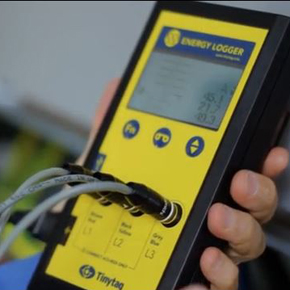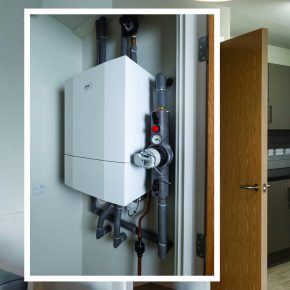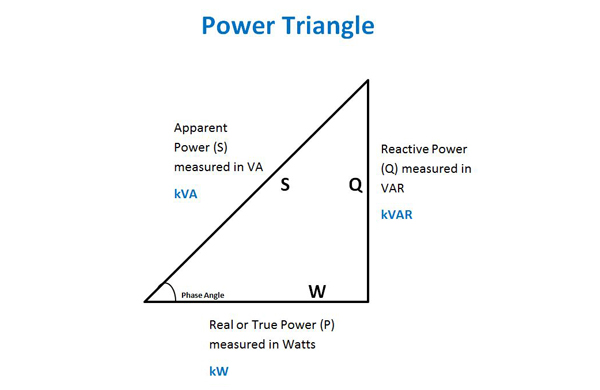
Why should energy managers monitor power factor?
Gemini Data Loggers explains why is is important to monitor power factor (PF) when observing overall energy use in high consumption facilities.
Power factor, or PF, is a measurement of how efficiently electrical power is consumed.
In manufacturing facilities, the operation of plant and equipment, such as motors, compressors, welding sets, and fluorescent lighting, can introduce additional currents called ‘inductive reactive currents’ into a site’s electrical supply.
The power dissipated in a load is the product of the voltage and current. If a load is purely resistive, the voltage and current are in phase and all the power can do useful work. If a load has a reactive component, the voltage and current are not in phase. The reactive load causes current to flow, but it can do no useful work.
The relationship between resistive and reactive power can be described by the power factor. A purely resistive load has a power factor of one and a phase angle of zero, because there are no electrical inefficiencies.
Meanwhile, a purely reactive load has a power factor of zero and a phase angle of 90.
The relationship between apparent, real and reactive power can be represented in the power triangle.
Most loads have a component of each: ideally, in terms of consumption, electrical efficiency would be around 1.00 PF. However, in a typical commercial or industrial site, this inductive loading can cause it to be reduced to around 0.80 PF.
Choosing an energy monitoring device that has the ability to measure power factor is important in gaining an accurate overall picture of energy usage and planning efficiency measures.
How can PF affect electricity costs?
Low power factors are undesirable. If a load has a low power factor, more current must be supplied by the utility company than is actually needed. This means heavier equipment, inefficient use of energy, and additional electricity costs.
Organisations with a poor power factor are likely to be charged a premium for power by the utility company.
In addition to saving energy and reducing costs, as the power factor of a system is improved, the release of electrical capacity means that the total current flow will be reduced. This permits additional loads to be added and served by an existing system.
Choosing efficient energy data loggers
When assessing overall energy efficiency, it is important to use an energy data logger that records power factor., in addition to single and three phase power usage.
The ability to measure PF in a facility will indicate how effectively electrical power is being used, enabling facilities to introduce corrective measures that can target the inductive reactive currents, counteract the inductive element of the load and increase electrical efficiency to nearer the ideal target of 1.00 power factor.
Power factors can be improved by the installation of new or specialist equipment, including dedicated integrated circuits.
To ensure an accurate measurement of power usage, it is important to choose an energy logger that measures both voltage and current usage and correlates the timing between the two to measure the power factor.
Tinytag Energy Data Logger
The Tinytag Energy Data Logger is a useful tool for identifying and evaluating energy saving measures.
The system monitors single and three phase power usage, and power factor. It can be used for spot checks, or left to record for longer periods to help build up energy profiles throughout an organisation.
Gemini Data Loggers,
Scientific House,
Terminus Road,
Chichester,
West Sussex,
United Kingdom,
PO19 8UJ
Phone: 01243 813000
Fax: 01243 531948
Visit Gemini Data Loggers' website
Visit Supplier's page
Latest news

28th April 2025
Nuaire first UK ventilation manufacturer to use low carbon-emissions recycled & renewably produced steel
Nuaire has announced that its Magnelis® steel based ventilations systems are now being made from XCarb® recycled and renewably produced steel.
Posted in Air Conditioning, Articles, Building Industry News, Building Products & Structures, Building Services, Building Systems, Heating, Ventilation and Air Conditioning - HVAC, Restoration & Refurbishment, Retrofit & Renovation, Steel and Structural Frames, Sustainability & Energy Efficiency, Waste Management & Recycling
28th April 2025
Renderplas: Builders avoid costly remedial work with PVCu render beads
A pioneer of PVCu render beads, Renderplas is helping the construction industry avoid the costly remedial work associated with rusting steel designs…
Posted in Articles, Building Industry News, Building Products & Structures, Building Services, Building Systems, Facades, Posts, Render, Restoration & Refurbishment, Retrofit & Renovation, Sustainability & Energy Efficiency, Walls
28th April 2025
How Celotex’s Technical Team adds value through expert insulation support
From U-value calculations to real-world installation support, Celotex’s technical team helps construction professionals specify and install insulation with confidence…
Posted in Articles, Building Industry News, Building Products & Structures, Building Services, Insulation, Research & Materials Testing, Restoration & Refurbishment, Retrofit & Renovation, Sustainability & Energy Efficiency, Walls
28th April 2025
Ideal Heating Commercial takes extra care with the heat network at Huddersfield specialist housing development
Ideal Heating Commercial POD Heat Interface Units (HIUs) and Evomax 2 condensing boilers have been installed into Ash View Extra Care in Huddersfield.
Posted in Articles, Building Industry News, Building Products & Structures, Building Services, Case Studies, Facility Management & Building Services, Heating Systems, Controls and Management, Heating, Ventilation and Air Conditioning - HVAC, Pipes & Fittings, Plumbing, Restoration & Refurbishment, Retrofit & Renovation
 Sign up:
Sign up: 